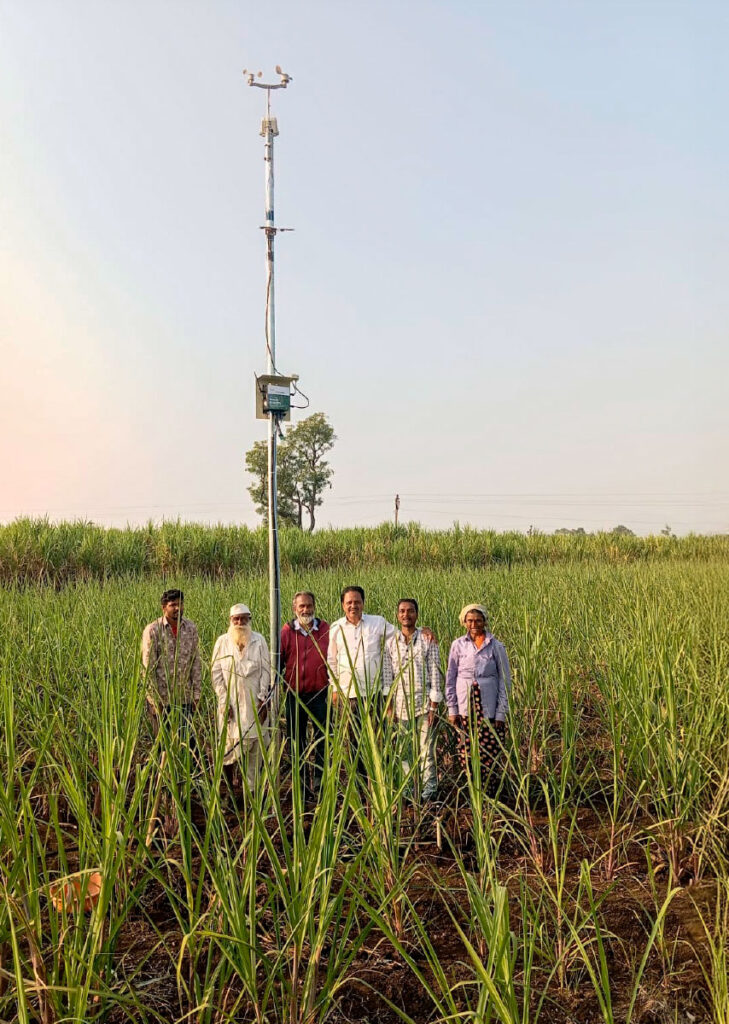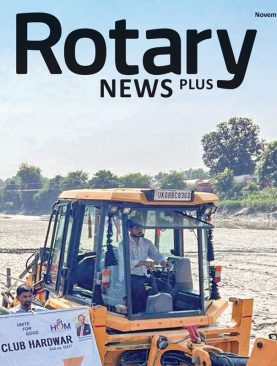An interesting development in the area of Artificial Intelligence (AI) is proving transformative in agriculture. The application of AI in farming has shown remarkable potential, with the Baramati district in Maharashtra leading the charge in enhancing agricultural productivity. For centuries, unpredictability has been the bane of a farmer’s existence, with too little or too much rain, pests and disease all threatening to destroy crops, pushing him into debt and, in some cases, even driving him to suicide. With climate change, the unpredictability has only become more pronounced and made a farmer’s work that much harder.

Baramati farmers are working towards achieving remarkable results in sugarcane farming using AI technology, setting an example for the future of agriculture. Microsoft chairman Satya Nadella, who recently visited India, recognised their efforts and praised this innovative work during his visit to Baramati. With the assistance of the Agriculture Development Trust (ADT) in Baramati and support from Microsoft’s AI tools, these farmers have been able to boost their crop yield, thus leading the way for integrating AI into agriculture as a part of this groundbreaking project.
The ADT has been guiding around 1,000 farmers in using AI technology for sugarcane farming on an experimental basis, with the focus on improving sustainability and productivity. The use of AI in agriculture aims to provide real-time solutions for optimal crop management, thereby empowering farmers to make data-driven decisions.
India is the largest producer of sugarcane in terms of total area, but in terms of total productivity Brazil, Chile are way ahead. What we lack is use of modern technology and discipline, and the AI application can prove to be a gamechanger.
Implementing data-driven farming solutions
The foundation of this initiative lies in Microsoft’s Azure Data Manager for Agriculture (ADMA). This platform collects and processes data from various sources such as satellite weather stations and soil sensors. This data provides farmers with a comprehensive view of their land’s condition, helping them make better decisions regarding planting, irrigation and fertilisation. Complementing ADMA is FarmVibes.AI, an open-source tool from Microsoft Research that offers insight into soil moisture, temperature, humidity and nutrient levels. These details are delivered through Agripilot.ai, a mobile application that offers personalised recommendations in local languages, ensuring accessibility for every farmer, regardless of his technological proficiency.
Data-driven decision making
Thanks to these AI tools, the selected farmers can make informed decisions aimed at precision farming, monitoring real-time climatic conditions, assessing soil health, moisture and nutrient levels.
Best of all, the AI solutions on offer to the farmers are in their local language Marathi, ensuring optimum understanding and effective utilisation.
The family of Suresh Jagtap, 65, has been farming in Baramati’s Nimbut village for generations, moving from producing vegetables and fruits to sugarcane which brings in more money. But to ensure maximum return, it isn’t enough to ensure that the crop survives the vagaries of weather and pests; a farmer has to ensure lower input costs as well as harvest at the right time — a 20-day window — to get the highest possible sucrose content. Recently, Jagtap turned to AI for help, aided by scientists at the ADT and use of Microsoft’s AI technology.
On this farmer’s field is located a weather station, a tall metal structure with wind, rain, solar, temperature and humidity gauges at the top and sensors at the bottom, to measure moisture, pH (acidity or alkalinity), electrical conductivity and nutrients like potassium and hydrogen. The data from these is combined with satellite and drone imagery as well as historical data and then analysed to generate simple daily alerts sent to farmers through a mobile app, with instructions such as — ‘water more, spray fertiliser, check for pests’ etc given. Exact locations are marked for the farmers on a satellite map of their farms.
While the harvest won’t be until October or November this year, Jagtap says he has been following all the steps since planting a one-acre test plot on his four-acre farm six months ago, and can already see the difference. “The growth is good. The leaves are greener and the height is more uniform,” he says.
‘Farm of the future’
Pratap Pawar, MD, Sakal Papers and brain behind this project, says that the Trust unveiled its AI project called the ‘Farm of the Future’ in January 2024 with approximately a dozen crops, including sugarcane and tomato under its radar. “Seeing is believing is the philosophy of farmers,” he says.
The success of AI in Baramati’s agriculture has garnered international attention. Nadella has highlighted these advancements, sharing a video that showcases the transformative impact of AI on local farming practices. Elon Musk also praised the initiative, stating, “AI will improve everything.” Overall, the integration of AI in Baramati’s farming practices exemplifies how technology can empower small farmers, leading to increased productivity, resource efficiency and sustainability in agriculture.
The writer is an IT entrepreneur, digital literacy activist and past governor of RID 3131.
Key applications of AI in Baramati’s agriculture
Data integration: AI systems amalgamate information from satellites, drones and soil sensors to provide a comprehensive overview of farm health. This integration facilitates precise irrigation schedules, optimal planting times and targeted pest control measures.
Mobile applications: The Agripilot.ai app, customised for ADT Baramati, delivers real-time, localised insight to farmers in Marathi. It offers daily alerts tailored to each farm, guiding farmers on specific action pertaining to fertilisation, pest scouting, etc.
Coming to results, these farms have seen significant improvement; the sugarcane test plots have yielded stalks that are taller and thicker, weighing 30–40 per cent more at harvest, and yielding 20 per cent more sucrose. Also, there has been reduced water and fertiliser usage, contributing to more sustainable farming practices.





